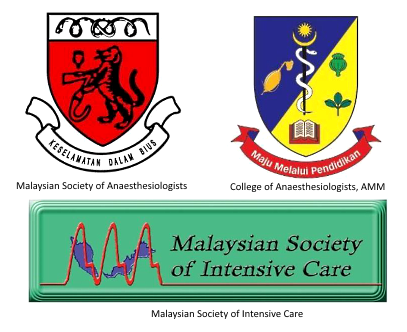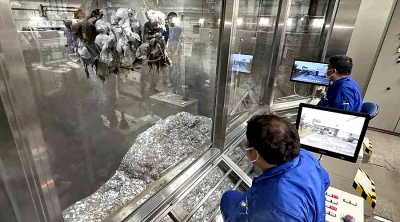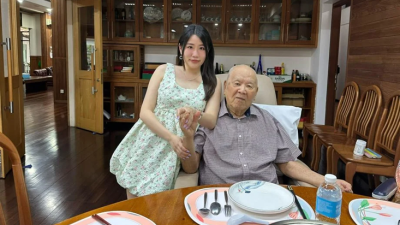
The College of Anaesthesiologists, Academy of Medicine of Malaysia (CoA); the Malaysian Society of Anaesthesiologists (MSA) and the Malaysian Society of Intensive Care (MSIC) would like to collectively respond on the issues surrounding the junior contract medical officers (MOs) that drew attention and support from various organizations and groups.
Their frustrations are now expressed widely in the social media with threats of a strike by a group representing some of the junior doctors.
Firstly, we are of an opinion that now is not the time to call for a strike especially when our country is in turmoil facing this devastating pandemic.
We are aware that this issue is not recent and has been simmering for an exceedingly long time, adding to the frustration.
This strike may lead to complicating situations, worsening the dire conditions in combating COVID-19 specifically when there is a possibility of compromise in patient care.
We need an all-hands-on deck approach and owe it to the Malaysian public who have been steadfast in their support for all frontliners over the past one and a half years.
We take note of some of the pressure points being felt by our junior colleagues.
Their predicament started with the introduction of the contract system in 2016 as an initial solution to the delayed placement of house officers.
Upon joining the government service, the junior doctors were given a five-year contract package that consisted of a three-year contract with an option of a two-year extension.
In a reply to a query at the Dewan Negara on the 14th of September 20201, YB Menteri Kesihatan Datuk Seri Dr Adham Baba responded that the government was reviewing the assessment of Contract MOs to be promoted from Grade UD41 to Grade UD43. This promotion would be in line with the career development of permanently appointed MOs.
For career advancement and opportunities for further studies and specialty training, the Ministry of Health (MOH) was exploring the feasibility of granting a longer contract period.
Following a succession of press statements by various associations over the last week, Datuk Seri Dr Adham Baba released a press statement on the 23rd of June 2021.
He reported that 789 out of 2,544 (about 30%) MOs from the first cohort of 2016 and 2017 and some from the second cohort of 2017 were given permanent appointments.
Shockingly, he also informed that in the period between December 2016 and 31st May 2021, 23,077 UD41 MOs were appointed as contract doctors to undergo graduate training and compulsory service2.
It is no wonder we can witness the anxiety and the enormous dissatisfaction in our young colleagues.
In 2012, WHO reported3 that the MOH was able to fill only 64% of positions for doctors in 2009.
The MOH expected then that the shortages of doctors will continue through to 2020.
The deficit was addressed with increasing the number of graduates being produced with increasing availability of private medical colleges in the country and the return of medical graduates from overseas.
Unfortunately, on 22nd April 2015, Jabatan Perkhidmatan Awam (JPA) issued a directive to optimally utilize human resources, focusing on controlling the number of positions available and filling of vacant permanent posts in the public sector4.
As a consequence, Suruhanjaya Perkhidmatan Awam (SPA) had limited resources to hire new staff despite the assurances that critical sectors such as healthcare would not be affected.
The hiring of new healthcare personnel also did not increase in tandem with the requirements of our growing population.
To alleviate the reduction in the availability of permanent posts and the inability to match the surge of qualified medical graduates, the contract system was introduced.
The current pandemic exposed severely the shortage of human resources especially in the fields of anaesthesiology and critical care.
Doctors and nurses in these fields are experiencing burnt out and fatigue as their duties in managing critically ill patients and those requiring surgeries are stretched for long durations due to the inadequate number of staff.
In the Laporan Ketua Audit Negara Tahun 2018 Siri 1, the report highlighted significant manpower shortages that hampered the delivery of emergency services at the four hospitals which were audited5.
However, recruitment of staff was still subjected to approved appointment warrants, government capabilities and current policies in force. As the JPA's directive was still in effect to reduce government servants' number by 1%, new appointments could only be carried out on a rotating basis.
An appeal was made by the MOH to the JPA on the 1st of March 2019 for an exemption from the stipulation of the Human Resources Optimization Policy for the purpose of maintaining the continuity of service delivery in MOH.
In the same report, recommendations were made for the JPA to consider exempting MOH from the Human Resource Optimization Policy and allocate additional posts to overcome the shortage of health care workers including specialists.
In unity, we urge the relevant authorities especially from the Ministry of Finance and the JPA to take note of all these recommendations and expedite policy changes that can assist the MOH in alleviating the situation, top among which is to create more permanent posts.
Facing the future and what is the way forward.
Together, we are concerned of these developments but are aware of our roles.
Our goal is to offer our expertise and assistance in any form that is deemed necessary.
However, for manpower planning and training, we will need the full cooperation from the policy makers to work jointly with us to ensure the future availability of a competent workforce in providing anaesthesia and intensive care services.
However, whilst planning the future, the current acute problem faced by the junior doctors must be addressed appropriately.
Since 1984, our fraternity established a postgraduate training program offered by universities producing some world-renowned anaesthesiologists, critical care specialists and intensivists.
These achievements would not have been possible without the vision and foresight of our many leaders in healthcare, public administration and the political will of our leaders.
Our role as professional societies is to help train the next generation of anaesthesiologists, critical care physicians and intensivists.
In 2010, the total number of anaesthesiologists in Malaysia was 681 or one anaesthesiologist to every 42,000 people6.
For the country to achieve a target for a population of 32 million with one anaesthesiologist to every 9,000 people, we would need to have about 3,500 qualified anaesthesiologists, but at the moment as of 2019, we only have about 1,100 specialists.
We appreciate the limited numbers of training spots offered by the universities. Thus, to improve the ratio of anaesthesiologist to population, we need to have an alternative postgraduate training opportunity either locally or abroad.
As a result, a long-term solution was planned with a parallel pathway postgraduate program developed together with the College of Anaesthesiologists of Ireland allowing more training opportunities for our young doctors to specialize in our field.
We projected annually at least 100-150 qualified specialists will be produced from both postgraduate training pathways.
With the current situation afflicting our junior doctors, we are concerned that we may potentially lose some of our brightest talents when they decide to resign public service to join the private sector without specialization or even continue with the brain drain by applying for employment abroad which may offer certainty in career advancement.
As the postgraduate training program offered by universities are being awarded with Hadiah Latihan Persekutuan, which eligibility is only for permanent MOs, we foresee the trend of the parallel postgraduate program will be taken up by the contract MOs as it is self-funded.
As a result, they will be qualified contract specialists. We anticipate we will be losing some of these contract specialists to the private sector/overseas if they continue to be offered only contract positions.
All these uncertainties without a clear answer will only cause more confusion and resentment.
Furthermore, career advancement would be affected when one is on contract basis employment. Delay in appointment to permanent posts too will delay promotions.
In fact, a good leader may be overlooked for promotion just because he/she is in the contract category and not a specialist under the permanent category.
The nature of this dualistic approach towards specialist training will only split the workforce further, causing more anguish and demotivation as if it were designed to fail by default.
Finally, we are worried for the next generation of anaesthesiologists when in a decade or two, most of the current senior anaesthesiologists will be in their retirement.
We cannot afford to have the current dilemma remain without a clear solution.
Our vision to continue the current training plans may be hindered. Malaysia needs its brightest young talents to go the distance with us.
We need them as much as they need our voice now to champion their cause as we reach out in solidarity.
Clear, systematic transparent policies and strategies need to be enforced to mitigate this conundrum.
We will continue to support the government and MOH particularly in all areas of training to ensure the standards of anaesthesiologists, critical care physicians and intensivists will be at the highest levels for our rakyat.
We hope and pray that with good judgment and wisdom, we will find a solution for the plight faced by our junior contract doctors.
References:
1 Oral Answer from the Dewan Negara Hansard 14.9.2020
2 Press release by the YB Menteri Kesihatan on contract doctors' issues dated 22 June 2021.
3 Malaysia health system review. (Health Systems in Transition, Vol. 2 No. 1 2012) Asia Pacific Observatory on Health Systems and Policies and World Health Organization Regional Office for the Western Pacific
4 Laporan Tahunan Suruhanjaya Perkhidmatan Awam 2016 page 40
5 Laporan Ketua Audit Negara Tahun 2018 Siri 1
6 National Healthcare Establishments & Workforce Statistics 2010: Chapter 7 Anaesthesiology Services in Malysian Hospitals.
(Professor Dr Marzida Mansor, President, Malaysian Society of Anaesthesiologists; Dato Dr Jahizah Hassan, President, College of Anaesthesiologists, AMM; Professor Dr Mohd Basri Mohd Nor, President, Malaysian Society of Intensive Care.)
ADVERTISEMENT
ADVERTISEMENT


































